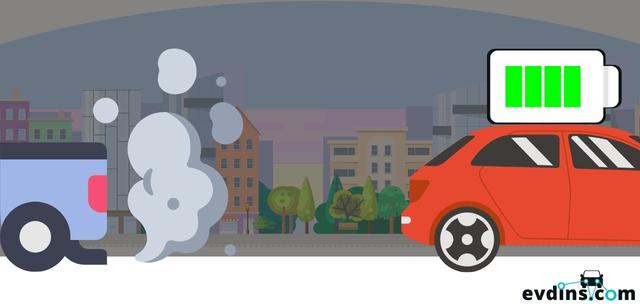Key insights:
- $44,450 (29.72% below average);
- Cost per mile: $0.037 (21.29% below average);
- Estimated annual charging cost: $550 (22.48% below average);
- Estimated fuel savings compared to a standard car: $9,750 (8.91% above average);
- Charge time: 5 hrs at 240V (standard charge time is 44.96% below average);
- Efficiency: 28.6352 kWh per 100 miles (21.26% below average);
- MPGe: 118 (20.25% above average); and
- Range: 114 miles (45.5% below average).
Continue reading to see how the 2018 BMW i3 (94Ah) compares to other EVs in more detail.
Plus, use the EV Electricity Cost Calculator to see your own specific cost per mile, month and year.

Brief overview of this EV:
- Manufacturer / brand: BMW;
- Model: i3 (94Ah);
- Vehicle type (i.e. EPA listed vehicle size class): Subcompact Cars;
- Transmission: Automatic (A1);
- Drive axle type: Rear-Wheel Drive;
- Electric motor details (kw-hrs): 125 kW AC Induction; and
- Year: 2018.

2018 BMW i3 (94Ah) Price Vs Other EVs
$44,450 is the price of the 2018 BMW i3 (94Ah).
This is the Manufacturer’s Suggested Retail Price (MSRP) on release of the EV.
Compared to all other electric cars, the 2018 BMW i3 (94Ah) costs $18,799.59 less than the average.
That works out to a price that’s 29.72% below average.
The average price of an electric car is $63,250.
The most expensive EV has an MSRP of $187,600, while the least expensive comes in at $22,995.
In addition to the retail price of EVs, electricity costs should also be considered.
So, next, let’s take a look at how much the 2018 BMW i3 (94Ah) costs per mile, and see how this compares with other electric cars.

2018 BMW i3 (94Ah) Cost Per Mile
The 2018 BMW i3 (94Ah) costs $0.037 per mile.
This cost per mile is 21.29% below average for all EVs.
Rounding the cost per mile to cents can result in less accurate running cost estimates.
For this reason, the cost per mile figure above is rounded to a fraction of a cent, specifically 3 decimal places.
For increased accuracy, it’s more common to see running cost estimates based on the cost to drive 25 miles.
To drive a 2018 BMW i3 (94Ah) for 25 miles, it costs $0.93.
For perspective, it costs $0.25 less than the average to drive a 2018 BMW i3 (94Ah) for 25 miles.
The average cost to drive an electric car 25 miles is $1.18.
Many nuances come into play when estimating the cost per mile of an electric car.
Driving style, weather conditions, load weight, among many other factors, impact the cost per mile.
The figures above assume 45% highway driving and 55% city driving, along with current fuel prices (according to the U.S. Department of Energy).
Now that we know the cost per mile, let’s see how much it costs to run a 2018 BMW i3 (94Ah) per month, and year.

Charging Costs For The BMW i3 (94Ah) (2018)
It costs $550 per year ($45.83 per month) to charge a 2018 BMW i3 (94Ah).
On average, it costs $709.47 per year to charge an electric car.
This means that the 2018 BMW i3 (94Ah) is 22.48% below average when it comes to running costs.
In terms of money, a 2018 BMW i3 (94Ah) costs $159.47 less than the average annual expense to keep an electric car charged.
For more perspective, the most common cost per year to charge an electric car is $600, with the lowest being $450 and the highest being $2,350.
These insights assume an annual mileage of 15,000 mi, with 45% being highway driving and 55% city driving, along with current fuel prices used by the U.S. Department of Energy (DOE).
To get a more tailored estimate of charging and running costs for your electric car, use the EV Electricity Cost Calculator below.
But first, you’ll need to know how efficient the 2018 BMW i3 (94Ah) is, so let’s take a look at that next.
2018 BMW i3 (94Ah) Efficiency (kWh Per Mile)
The less electricity consumed per mile, the more efficient the EV.
A 2018 BMW i3 (94Ah) uses 26.1117 kWh of electricity every 100 miles of city driving (25.43% below average), 31.7194 kWh/100 mi of highway driving (16.55% below average), and 28.6352 kWh/100 mi of combined city and highway driving (21.26% below average).
As you can see, electric cars consume different amounts of electricity when being driven on a highway or in a city. So let’s look at these separately in more detail before combining both.

kWh Per Mile – City Driving
The 2018 BMW i3 (94Ah) consumes 26.1117 kWh per 100 miles of city driving. For perspective, this is (25.43% below average).
On average, EVs use 35.02 kWh of electricity every 100 miles.
This means that, per 100 miles, the 2018 BMW i3 (94Ah) consumes 8.9 kWh less than the average for EVs.
For more context:
- EVs most commonly consume 38 kWh per 100 miles of city driving;
- The most efficient EV uses just 22 kWh to travel 100 miles in a city; and
- The least efficient model consumes a substantial 122 kWh of electricity every 100 mi of city driving.
Next, let’s take a look at how efficient the 2018 BMW i3 (94Ah) is on the highway.

kWh Per Mile – Highway Driving
A 2018 BMW i3 (94Ah) uses 31.7194 kWh of electricity every 100 miles on a highway, which is 16.55% below average for EVs.
EVs consume 38.01 kWh per 100 miles of highway driving, on average.
In terms of units, a 2018 BMW i3 (94Ah) consumes 6.29 kWh less than the average for EVs every 100 miles on a highway.
For more perspective:
- The most common amount of electricity consumed on a highway for EVs is 37 kWh;
- The most efficient electric car for highway driving uses just 25.34 kWh per 100 miles; and
- The biggest energy guzzler consumes 120 kWh every 100 miles on a highway.
Finally, in terms of energy efficiency, let’s take a look at the performance of the 2018 BMW i3 (94Ah) combining both highway and city driving.
kWh Per Mile – Combined City & Highway Driving
Overall, the 2018 BMW i3 (94Ah) consumes 28.6352 kWh per 100 miles – this is 21.26% below average for an EV.
On average, EVs use 36.37 kWh of electricity every 100 miles.
With this in mind, we can see that a 2018 BMW i3 (94Ah) consumes 7.73 kWh less than the average every 100 miles travelled.
Inline with the DOE, these figures assume 45% highway driving and 55% city driving.
For more context:
- Electric cars most commonly consume 32 kWh of electricity per 100 miles;
- The most efficient EV uses just 23.74 kWh every 100 miles; and
- The least efficient EV consumes a significant 121 kWh per 100 mi.
Ok, so now that we know how efficient the 2018 BMW i3 (94Ah) is, and how much it typically costs to run, let’s get back to the EV Electricity Cost Calculator so you can easily see your own specific running costs.

EV Electricity Cost Calculator
See how much it costs you to run your EV per mile, month and year. Use the EV Electricity Cost Calculator below.
Simply enter:
- How many kWh your EV uses per 100 miles of combined city and highway driving (e.g. the 2018 BMW i3 (94Ah) uses 28.6352 kWh);
- Your estimated annual mileage (15,000 mi p/y is typical & is commonly used as the assumed mileage when comparing EVs); and
- The price you pay per kWh of electricity (15.46 cents was the US average in July 2022, according to the U.S. Energy Information Administration).
So, now that you have a better sense of your own specific running costs, let’s take a look at how much the 2018 BMW i3 (94Ah) can save you per year compared to other electric cars.
Fuel Savings For The BMW i3 (94Ah) (2018)
The 2018 BMW i3 (94Ah) will save you an estimated $9,750 in fuel over a 5 year period, compared to an average car.
This is $797.37 more than the average fuel savings for an electric car.
In other words, the fuel savings of the 2018 BMW i3 (94Ah) is 8.91% above average for EVs.
Electric cars create an average fuel savings of $8,952.63 compared to an average car, over a 5 year period.
The most common EV fuel saving is $9,500, with $10,250 being the highest, and $750 being the lowest savings amount.
These fuel savings insights use baseline data from the DOE.
OK, now that we have a good sense of the fuel savings compared to an average car, let’s take a look at the 2018 BMW i3 (94Ah)’s “Miles Per Gallon Equivalent” of gasoline (MPGe).

2018 BMW i3 (94Ah) MPGe
The 2018 BMW i3 (94Ah) has a combined MPGe of 118, city MPGe of 129, and highway MPGe of 106.
But is this MPGe good? Let’s see by comparing it with the average MPGe for all electric cars.
The average combined MPGe is 98.13, while the average city MPGe is 102.92, and the average highway MPGe is 93.37.
This means that the 2018 BMW i3 (94Ah) has a combined MPGe that is 20.25% above average, a city MPGe that’s 25.34% above average, and a highway MPGe that is 13.53% above average.
Specifically, in terms of MPGe values, the 2018 BMW i3 (94Ah) gets a combined MPGe that is 19.87 more than the average, a city MPGe that is 26.08 more than the average, and a highway MPGe that’s 12.63 more than the average.
Let’s add even more perspective.
The table below shows the highest MPGe, lowest MPGe, and most common MPGe, along with the 2018 BMW i3 (94Ah) MPGe, for combined, city and highway driving modes.
| MPGe category | Combined MPGe | City MPGe | Highway MPGe |
| Highest MPGe | 142 | 150 | 133 |
| Lowest MPGe | 28 | 28 | 28 |
| Most Common MPGe | 112 | 124 | 102 |
| 2018 BMW i3 (94Ah) MPGe | 118 | 129 | 106 |
For more details on MPGe, including a detailed definition, why it’s important, the Top 100 EVs by MPGe, and to get data insights from a comprehensive study, don’t miss: MPGe – All You Need To Know.
MPGe is a key performance indicator for EVs, and is a helpful metric for comparing the efficiency of standard cars with all electric cars, not just the 2018 BMW i3 (94Ah).
The further you can travel per gallon or per gallon equivalent of gasoline, the more efficient the vehicle.
Additionally, you’ll save more money with a higher MPG or MPGe due to the less refueling.
Speaking of refueling, let’s take a look at how long it takes to charge a 2018 BMW i3 (94Ah).

BMW i3 (94Ah) (2018) Charge Time
The 2018 BMW i3 (94Ah) has a charge time of 5 hrs at 240V.
To put this into perspective, the 2018 BMW i3 (94Ah) has a standard charge time that is 4.08 hrs less than the average for EVs.
In other words, a 2018 BMW i3 (94Ah) has a standard charge time that’s 44.96% below average.
On average, electric cars have a standard charge time of 9.08 hrs and a fast charge time of 6.14 hrs.
Combining both standard and fast charging times, EVs take 8.35 hrs to charge, on average.
The EV with the lowest standard charge time takes just 3 hrs to fully charge.
The lowest fast charge time for electric cars is just 2.5 hrs.
The longest standard and fast charge time for an EV is 15.3 hrs and 9.6 hrs, respectively.
However, it’s worth noting that battery capacity plays a significant role in electric car charge times.
This is because charge time is different to charge speed.
Usually the smaller the EV’s battery capacity, the lower the charge time.
As a result, knowing how long it takes to charge a 2018 BMW i3 (94Ah) is important. But, benchmarking charge time against EV averages (and other data points) can be misleading. Other factors, such as charge speed, battery capacity and charging tech, should also be considered.
Another consideration includes how far the EV can go when charged. So, let’s take a look at this next.
2018 BMW i3 (94Ah) Range On Full Charge
The 2018 BMW i3 (94Ah) can reach a range of 114 miles when fully charged. This is 45.5% below average for EVs. More specifically, its range is 95.16 miles less than the average for an EV.
When driving on a highway, the 2018 BMW i3 (94Ah) has a range of 101.9 miles. This is 70.09 miles less than the average (or 40.75% below average) compared to other EVs.
In terms of city driving, the 2018 BMW i3 (94Ah) can reach 123.8 miles when fully charged. Compared to other electric cars, this is 60.54 miles less than the average (or 32.84% below average).
The average electric car range is 209.16 miles.
This is the combined highway and city driving average.
The average EV range on a highway is 171.99 miles, while the average city range is 184.34 miles.
Let’s add more perspective to the 114 mile range of the 2018 BMW i3 (94Ah).
Based on official data for all EVs:
- The most common electric car range is 270 miles, with 266.8 miles being the most common range for highway driving, and 89 miles being the most common for city driving;
- The longest EV range is 520 miles. The longest highway range is 520.5 miles, while the longest city range for electric cars is 520.8 miles; and
- The shortest combined range for an EV is 29 miles.
Many factors impact the range that a 2018 BMW i3 (94Ah) (and EVs in general) can reach, such as driving style, average speed, and battery load (e.g. running AC).
But so too is the load weight. Traveling light can greatly extend the range of your charge.
Speaking of EV load weight, let’s take a look at how much space electric cars have for passengers and cargo.
Passenger Space
Electric car passenger space is an important consideration for many.
A 2018 BMW i3 (94Ah) has a passenger volume of 84 ft3.
This means that the 2018 BMW i3 (94Ah) is 9.94% below average when it comes to passenger space.
Specifically, this EV has passenger space that’s 9.27 ft3 less than the average.
Key EV passenger space insights:
- On average, electric cars have a passenger space of 93.27 ft3;
- The most common passenger volume for EVs is 94 ft3; and
- The EV with the largest passenger space offers a substantial 108 ft3 of room.
Please note that the above passenger volume insights are based on official data for approx. ⅔ of all EVs. Official data sources were not found for the remaining approx. ⅓ of EVs.
Next, let’s take a look at another important consideration for many electric car buyers – luggage / cargo space.
Cargo Space
The 2018 BMW i3 (94Ah) has 15 ft3 of cargo space.
That’s 26.29% below average for electric cars (specifically, 5.35 ft3 less than the average).
Here are some key EV cargo space insights based on all available data from official sources:
- On average, EVs have 20.35 ft3 of cargo space;
- The most common electric car cargo space is 26 ft3; and
- The largest cargo space offered by an EV comes in at 35 ft3.
Please note that, similar to passenger volumes, the above EV cargo space insights are based on official data for approx. ⅔ of all EVs. Official data sources were not found for the remaining approx. ⅓ of EVs.
Final Thoughts
I hope that the 2018 BMW i3 (94Ah) specs, listed above, gives you a good sense of its capabilities and suitability to you.
And I hope that, by comparing the 2018 BMW i3 (94Ah)’s specs to all other EVs available on the market today, you’re now in a better position to make a more informed purchasing decision.
There are many factors that impact whether or not to buy an electric car or to upgrade.
This website is intended to help you compare these factors, quickly and easily.
Now that you’ve done this for the BMW i3 (94Ah) (2018), you might be interested in the price of all electric cars (where every EV is ranked from lowest to most expensive), or the cheapest EV to run (where all EVs are ranked from least to most expensive per mile).
These articles will be available soon, so do check back in.
The data in this article has been gathered from the U.S. Environmental Protection Agency, the U.S. Department of Energy, fueleconomy.gov, and / or directly from manufacturers. This data was then analyzed and summarized to provide more convenient insights for you. Efforts have been made to ensure the information provided in this article is as accurate as possible, as of writing. While this website does get updated regularly, you’re encouraged to go directly to the data sources for the most up-to-date specs and to then draw your own insights & conclusions.